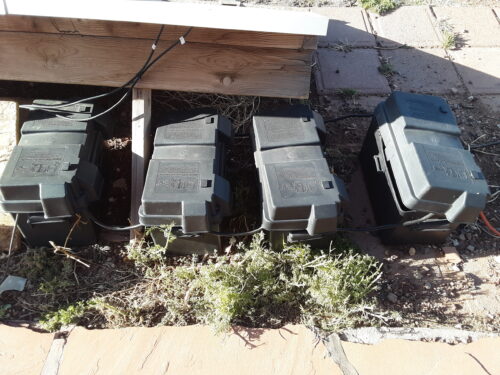
K here. Over the last few posts we’ve talked about different components of a photovoltaic system, specifically panels and controllers. In this post, I want to talk about batteries. But first, how do batteries actually work? There are a lot of detailed posts on this, so I’m going to keep it really basic here. A battery is a case with a positive and negative end. It has liquid inside that enables the flow of electrons, and a metal rod or plate that lets electrons travel from the negative to the positive end where they can be used to power a device. Once there are no more electrons, the battery is dead and needs to be recharged.
Essentially, there are three different categories of batteries, each with their own characteristics.
1. Starting battery
First of all, there’s the starting battery. Anyone who has a vehicle knows about these. Starting batteries have thin plates and are made to release large amounts of power to turn the starter. The problem with these is they won’t power anything for very long. Anyone who has accidently left their headlights on can attest to this.
2. Marine battery
The marine battery is a hybrid of the starting battery and deep cycle battery (described below). The plates are thicker than a starting battery, but thinner than a deep cycle battery. They’re called marine batteries because they were originally used on boats. They have the ability to discharge enough power to start a boat engine and to release power for short periods of time (for running lights, etc.).
3. Deep cycle battery
At the other end is the deep cycle battery. These have very thick plates and are made to release energy over long periods of time without damaging the battery. The problem with these is that they’re very heavy and usually cost far more than a starting battery.
Stay tuned for a continuation of this blog post.
Next blog post: Part 5: Photovoltaic systems–types of batteries continued (by K)
